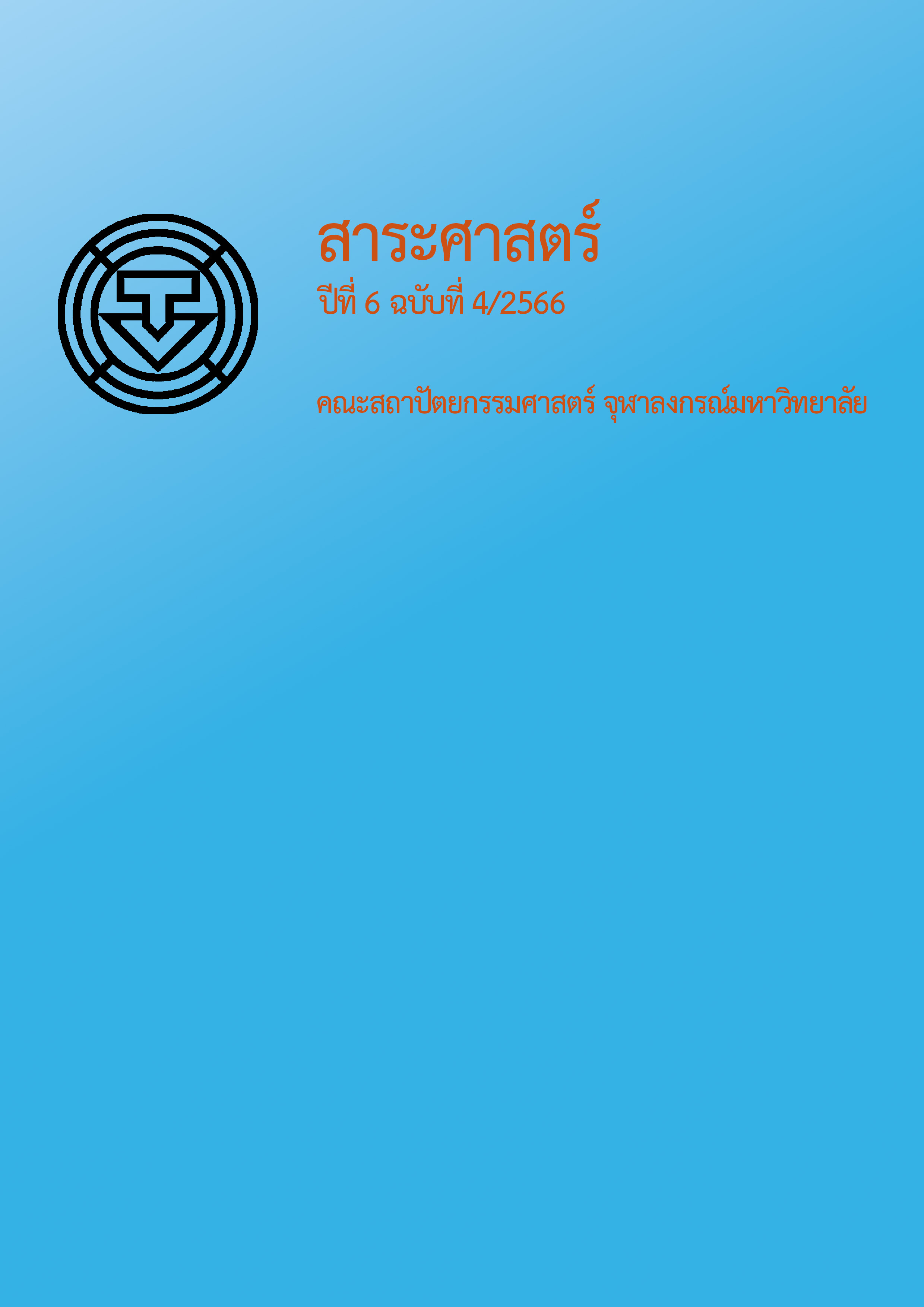Design Considerations for Outdoor Environment of Kindergartens for Promoting Young Children’s Development
Main Article Content
Abstract
The outdoor environment of kindergartens plays a crucial role in fostering holistic child development. This research explores the design considerations essential for creating effective outdoor spaces in kindergartens , to promote young children’s development. The research encompasses a series of case studies involving 3 kindergarten facilities located in Bangkok Metropolition Region. Data acquisition involved a quantative approach, comprising observational techniques, structured surveys, and in-depth interviews conducted with pertinent stakeholders. Educational concerns encompass a spectrum of factors safety, accessibility, and the provision of appropriate play equipment, the physical environment, the incorporation of sensory stimulation elements plays a pivotal role in fostering holistic child development. The research findings revealed that in the context of kindergarten environments, two key observations emerged; 1) the facilitators of outdoor engagement during young children encompass a range of critical factors including safety considerations, delineation of optimal utility zoning and planning to enhance flexibility across various activity areas, 2) The selection of elements such as grassy lawns and sandpits in the outdoor kindergarten environment has been contribute to children's development of across various domains. The research proposes design guidelines. The findings underscore the importance of a well-designed outdoor environment in promoting children's physical, cognitive, social, and emotional development. The insights from this research provide valuable guidance for architects, educators, and policymakers seeking to enhance the quality of kindergartens' outdoor spaces.
Article Details
References
บุญช่วย โสภิตอนงค์. (2531). สภาพการจัดการเรียนการสอนระดับก่อนประถมศึกษาในโรงเรียนเอกชนกรุงเทพมหานคร [วิทยานิพนธ์ปริญญามหาบัณฑิต ไม่ได้ตีพิมพ์]. จุฬาลงกรณ์มหาวิทยาลัย.
ร่วมคิด วัชรีย์. (2539). พัฒนาการของหลักสูตรการศึกษาปฐมวัยในประเทศไทยระหว่างปี พ.ศ. 2411-2538 [วิทยานิพนธ์ปริญญามหาบัณฑิต ไม่ได้ตีพิมพ์]. จุฬาลงกรณ์มหาวิทยาลัย.
วิไลพร เรือนศรี. (2544). การศึกษาการใช้หลักสูตรก่อนประถมศึกษา พุทธศักราช 2540 ในโรงเรียนประถมศึกษาสังกัด สำนักงานการประถมศึกษากรุงเทพมหานคร [วิทยานิพนธ์ปริญญามหาบัณฑิต ไม่ได้ตีพิมพ์]. จุฬาลงกรณ์มหาวิทยาลัย.
Aziz, N. F., & Said, I. (2017). The trends and influential factors of children's use of outdoor environments: A Review. Asian Journal of Environment-Behavior Studies, 2(5), 97-108.
Cosco, N. G., Moore, R. C., & Islam, M. Z. (2010). Behavior mapping. Medicine & Science in Sports& Exercise, 42(3), 513–519.
Fjørtoft, I., & Sageie, J. (2000). The natural environment as a playground for children. Landscape and Urban Planning, 48(1–2), 83–97.
Lewin, K. (1931). Environmental forces in child behavior and development. In C. Murchison (Ed.), A handbook of child psychology (pp. 94-127). Clark University Press.
Maynard, T., & Waters, J. (2007). Learning in the outdoor environment: A missed opportunity? Early Years an International Journal of Research and Development, 27(3), 255-265.
Mock-wha, C., & Byoung-sook, C. (2004). A case study on the planning process of 'A' kindergarten's playground. Applied User Participatory Design, 15(4), 1–11.
Olds, A. R. (2001). Childcare design guide. McGraw-Hill.
Piaget, J. (1962). Play, dreams and imitation in childhood. Norton.
Torkington, K., & Landers, C. (1995). Enhancing the skills of early childhood trainers: Training pack. United Nations Educational,Scientific and Cultural Organization.
Synodi, E. (2010). Play in the kindergarten: The case of Norway, Sweden, New Zealand, and Japan. International Journal of Early Years Education, 18(3), 185–200.
Tezuka, T., & Tezuka, Y. (2021). Fuji kindergarten: Architecture of open play and learning. Childhood Education, 97(5), 60–65.
Titman, W. (1997). Special places, special people: The hidden curriculum of school grounds. Set: Research Information for Teachers, (1), 1–4.
Vygotsky, L. S. (1967). Play and its role in children's play as a developmental task. Play and Culture.


